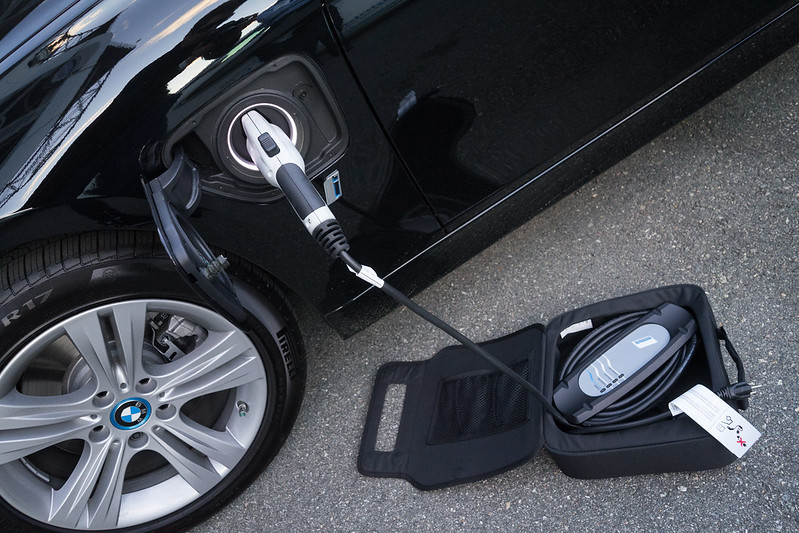
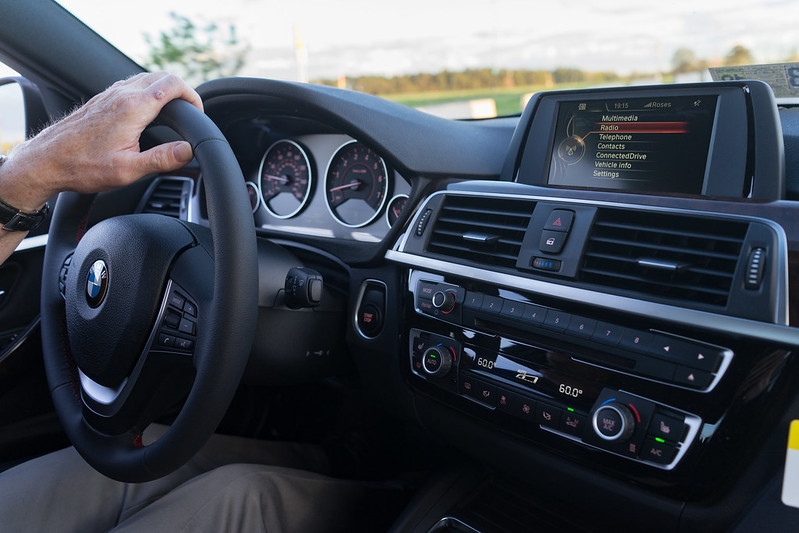
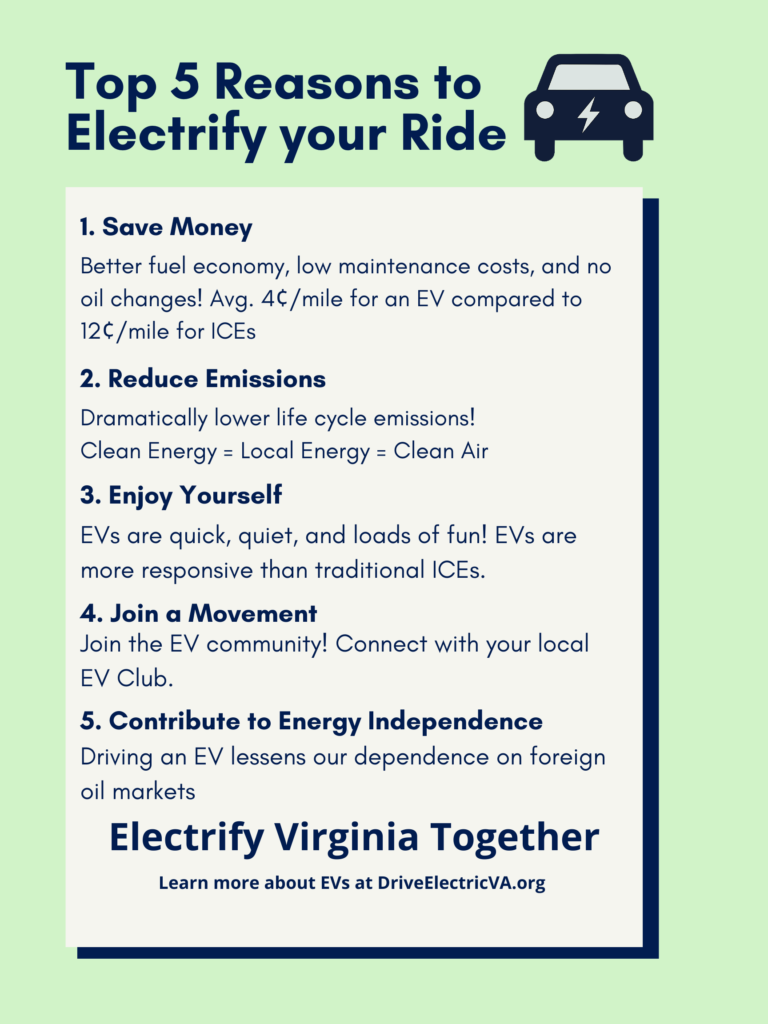
EVolution of Electric Vehicles
An electric car is any vehicle that is powered by a battery that has been charged by an external electricity source. Electric cars have actually been in existence as long as gasoline-powered cars.
Modern interest in electric vehicle technology began in the 1970s as gas prices increased, leading Congress to pass the Electric and Hybrid Vehicle Research, Development, and Demonstration Act in 1976. In the 1990s, concerns about transportation emissions led to manufacturers modifying models for electric charging as well as the development of GM’s EV1 electric vehicle.
Today, technology advancements have led more manufacturers to focus on fuel efficiency and EV technology.
There are several different types of EVs that you’ll see on the road today: BEVs and PHEVs.
EV Charger Growth in Virginia

Types of Electric Vehicles
Plug-in Hybrid Electric Vehicle (PHEV)
Plug-in Hybrid Electric Vehicles (PHEVs) use both a battery to power an electric motor and a conventional fuel to power an internal combustion engine (ICE). The batteries of PHEVs can be charged from plugging in to the grid, from regenerative braking, or from the ICE. PHEVs primarily rely on the battery, and the ICE is used only when battery is mostly depleted, during rapid acceleration or high speeds, or for climate control. Typically, the battery of a PHEV has a driving range of 10 to 40 miles before the ICE. When relying solely on the battery, the PHEV produces no tailpipe emissions. The ICE of a PHEV also produces less emissions than conventional vehicles, and is more efficient in its fuel usage.
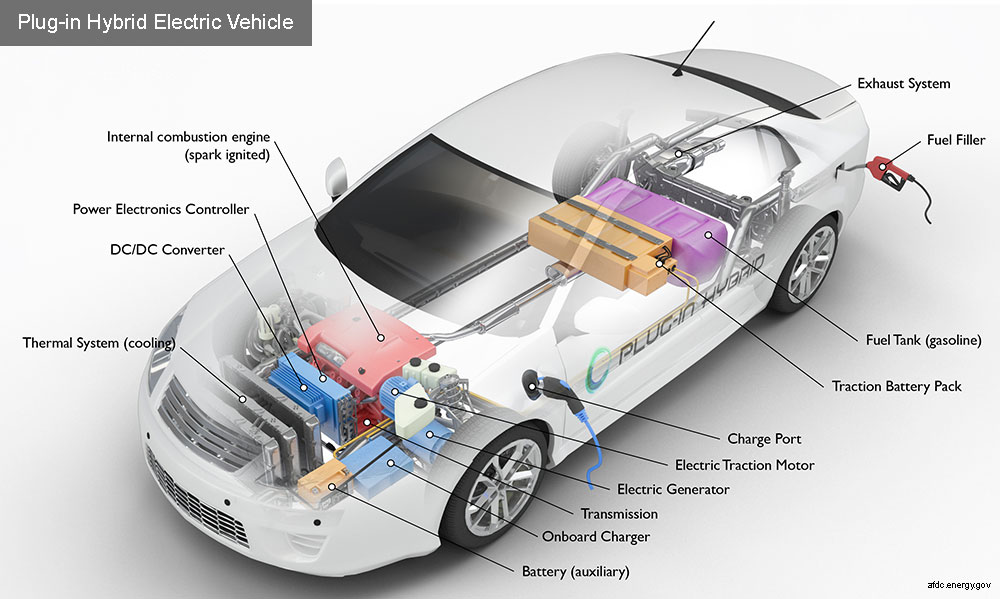
All-Electric Vehicles (EVs)
All-Electric Vehicles (EVs) use only electrical energy stored in a battery to power their motors. The battery is charged by plugging the vehicle into the grid at a charging station, or through regenerative braking. EVs do not produce any tailpipe emissions, but their range on a “full tank” is not as far as that of a vehicle powered by conventional fuels. Typically, a fully charged EV has a range under 300 miles, depending on driving habits and conditions.
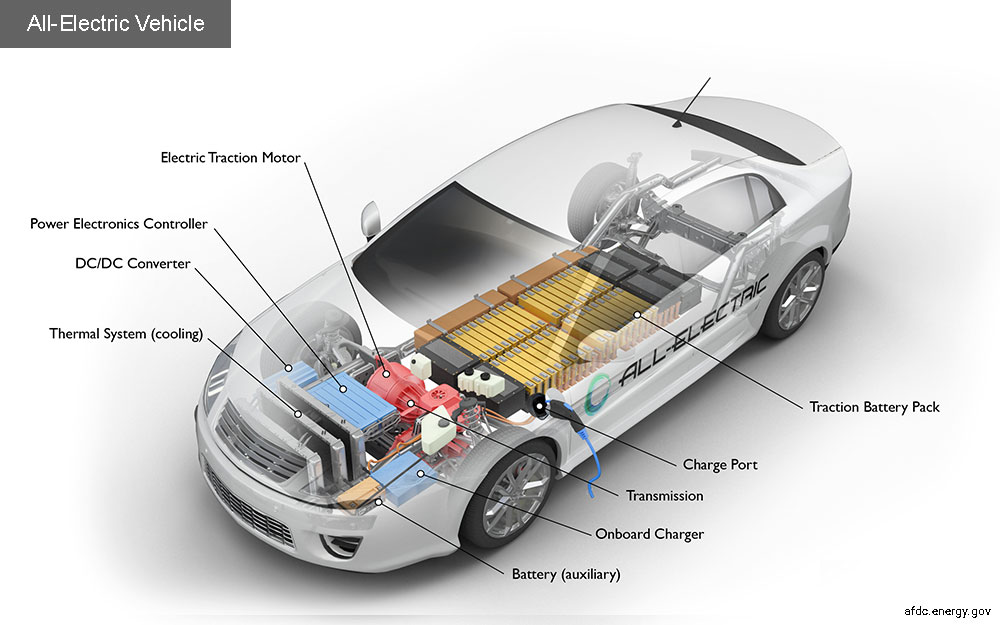
Information collected from: https://afdc.energy.gov/
